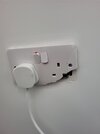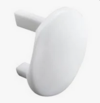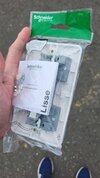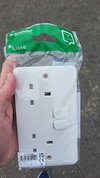I worked as an electrician for 40 years plus, so to me it seems easy, can't really advise some one who has never done it before, I helped my dad before even doing an apprenticeship, so looking back some 60 years when I fitted my first socket. So I looked at some Youtube video the
first one showed doing it in an ideal situation the
second one was more down to earth I use a non contact tester,
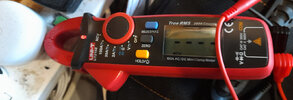
the same idea as second video to test dead before I remove the screws, but also plug in the leads after to test after the socket has been removed from the wall just like the second video, the plug in tester in the first video can give misleading results, it's a bit too cheap, the second tester is the opposite looking at £1000 for the tester, there is a happy middle road, the plug in tester with loop and RCD test,
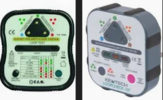
is a good tester, they do not record the time the RCD takes to trip, or test the loop is low enough for a ring final, we are looking for 1.38Ω or better and they typically pass at 1.9Ω which is the pass for a 20 amp circuit not a 32 amp one, however at between £30 and £60 they are within the pocket for DIY. And I would be happy with just the plug in tester, as the guy in second video says, electricians would not use them, as they need to write down the results on the minor works certificate.
Also with a ring, I would use the loop test and write down the results, before starting, then while doing the job test continuity between the two lines, the two neutrals and the two earth wires, then on reinstall test again, should a wire have come off where getting the socket in place, I would see the change in the loop impedance reading. It saves me testing at the consumer unit.
However I am sure many change a socket with no testing. When my dad showed me how to change a socket all those years ago he never tested the socket, he also added spurs on spurs, and fluorescent fittings with no earth wires, and it did not cause a fire or electrocute anyone.
As said as electricians we can't really see what is hard about changing a socket, only another DIY man can really say if hard or not.


